What would you do if a major natural disaster, such as a tornado or a hurricane, swept through your town and was coming straight for your house?
Or what would you do in the event of a home invasion where multiple armed burglars entered your house?
That’s why it’s crucial to have a secured room in your home that can keep you and your family hidden, sheltered, and safe during life-threatening emergencies.
This kind of room is commonly referred to as a panic room, and despite being very important, very few homes have any sort of a panic room in them at all.
In this article, we’ll cover why you need a panic room, the primary threats your panic room needs to protect you against, how to camouflage and secure your panic room, and how to stockpile your room so you and your family can outlast any disaster that comes your way.
Let’s get started.
What Is A Panic Room And Why Do You Need One?
A panic room, also known as a safe room, is simply a hidden and fortified room in your house that can provide you and your family a hiding place or shelter in the event of a home invasion, natural disaster, or any other kind of a critical threat that endangers your safety in your home.
Related: US Natural Disasters Map. What Calamity Do You Need To Prepare For?
Your panic room needs to be secured, hidden, reinforced, and well-stocked with supplies. It’s a room that you and your family can retreat to and hide in to stay safe during emergencies.
Your panic room can be located inside or outside of your home. Panic rooms range from fortified underground bunkers to hidden and reinforced closets or storage rooms.
The easiest way to build a panic room is to include it in the construction of a new home. This way, you can work with your home architect and builders so the room is incorporated into the construction of the home.
You can also better ensure that your panic room has all of the normal comforts that you are used to, such as a bathroom, sleeping area, storage space, and so on.
But many people don’t have this option to build an entirely new home with a panic room included. If this is the situation you’re in, the next best alternative would be to select an existing room in (or outside or underneath) your home to serve as your panic room.
Then, you’ll need to modify that room to make it panic room ready.
But first, let’s talk about the threats your panic room needs to protect you against.
Which Types of Threats Should Your Panic Room Be Ready For?
There are two primary threats that your panic room needs to protect you from: natural disasters and criminals.
Natural Disasters
A natural disaster is arguably the biggest reason to have a panic room. A severe natural disaster will result in destroyed or severely damaged homes, destroyed powerlines, streets that are completely shut down, and heavy debris that flies or floats at high speeds.
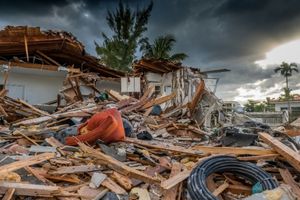 In the event of a major natural disaster of this magnitude (such as windstorms, tornadoes, fires, hurricanes, or flooding) staying in your home may not offer you adequate protection or security.
In the event of a major natural disaster of this magnitude (such as windstorms, tornadoes, fires, hurricanes, or flooding) staying in your home may not offer you adequate protection or security.
Furthermore, bugging out or trying to evade the disaster may not offer you sufficient protection either.
The only other option in this case is to bug into your panic room. A panic room with thick and insulated steel or concrete walls can provide you with safety from any of the aforementioned natural disasters.
When properly constructed or modified, a safe room can offer you and your family shelter from the natural and yet unpredictable storms raging outside.
If every home in the United States had a panic room, thousands of lives would be saved every year. You can ensure that you and your family are among those protected.
Criminals And Human Threats
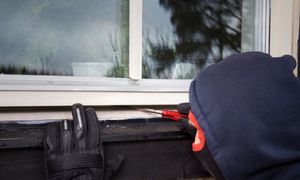 Protection from criminals is the second major reason to invest in a panic room.
Protection from criminals is the second major reason to invest in a panic room.
There are millions of burglaries that occur worldwide each year, and that’s also not to mention the threat of terrorist attacks or (depending on where you live in the world) enemy invasions.
A panic room can provide you with a safe place to hide during a home invasion, burglary, terrorist attack, or enemy invasion.
Choosing A Room For Your Panic Room
As mentioned prior, the easiest way to build a panic room is to include it in the construction of a new home. But if you’re not building a new home, you’ll have to select and modify an existing room in your home to serve as your panic room.
Most people will pick an existing closet, cellar, or storage space to serve as their panic room, while others will add onto their home by adding a space, such as adding a basement room or a room in the ceiling.
⇒ How To Build A Cheap Bunker In Your Backyard
Regardless of the room that you choose, make sure you choose a room that has no windows. Your panic room must be fully concealed and have as few entry points as possible.
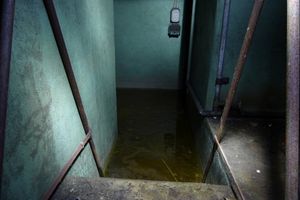
However, if the only existing room in the home that will work has windows, you can remedy this situation by installing bulletproof, high-ballistic windows that are designed to withstand forced entry.
It’s also critical for your panic room to be accessible to the frequented living spaces in the home.
Depending on the emergency, you may only have mere seconds to get everyone in your family into the panic room.
Last, but certainly not least, make sure that your panic room is large enough to house your entire family along with at least three day’s worth of supplies.
Securing Your Panic Room
Once you’ve picked a room in your home to serve as the panic room, the next step is to secure the room.
The walls of the panic room must be built out of materials capable of withstanding forced entry and extreme weather conditions. The idea is that even if the outside of your home is severely damaged, such as in the case of a natural disaster, your panic room will still be standing.
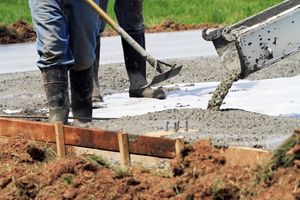 Concrete is arguably the best material to use as the walls for your panic room. But if you cannot modify your designated panic room, Kevlar, steel or fiberglass would be the next best option. For example, you can have steel, fiberglass, or Kevlar sheets professionally installed over your existing walls and ceiling of your panic room.
Concrete is arguably the best material to use as the walls for your panic room. But if you cannot modify your designated panic room, Kevlar, steel or fiberglass would be the next best option. For example, you can have steel, fiberglass, or Kevlar sheets professionally installed over your existing walls and ceiling of your panic room.
Related: 7 Prepping Items FEMA Will Confiscate When SHTF
There should be minimal entry points leading into your panic room, and any entry points leading in must be as reinforced as possible. The door that directly leads into your panic room is arguably the most critical component of your panic room to reinforce to deny forced entry.
Replace your existing door with a steel door, and make sure that your door knobs and hinges are all replaced with heavy duty knobs and hinges. There are security knobs and hinges that are built specifically for this purpose.
Then, make sure that your door is secure to the surrounding walls. The idea with your door is that it cannot be beaten down by home invaders armed with tools such as hammers, mallets, axes, or rifle stocks.
Then, you’ll need to camouflage your door to keep your panic room hidden. Examples of what you can do include hiding your safe room under the floor and the door under a rug, covering the door with a painting or piece of artwork, or disguising your door so it initially appears to just be a part of the wall.
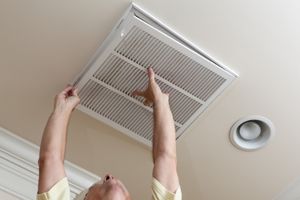 Last but not least, ensure that your panic room has a suitable air filtration system. You must ensure that your panic room receives a reliable supply of high quality air.
Last but not least, ensure that your panic room has a suitable air filtration system. You must ensure that your panic room receives a reliable supply of high quality air.
Look for professionally-made air filtration systems that are designed specifically for panic and emergency rooms.
Make sure that your air filtration system includes NBC (nuclear, biological, chemical) protection. Investing in an air filtration system that meets these qualities will cost you a bit of money, but it will be well worth it.
Stockpiling Your Panic Room
Keep in mind, your safe room doesn’t just have to be a room that you and your family retreat to during an emergency.
It can also double as a room in which you store your valuables, such as firearms, ammunition, money, jewelry, heirlooms, and other valuables.
You should also store supplies in your panic room so you and your family can live there for a short period if you need to.
Food And Water
 Plan to stockpile at least a three day’s supply of food and water in your panic room. For water, you’ll need a gallon of water per person per day.
Plan to stockpile at least a three day’s supply of food and water in your panic room. For water, you’ll need a gallon of water per person per day.
Simply add up the total members of your family, and then multiply by three to have enough water set aside for three days.
Make sure to rotate your water out once every three months.
For food, plan on storing non-perishable items such as MREs, freeze dried fruits and vegetables, canned food or food bars.
Communications Equipment
Communication equipment is vital to store in your panic room so you can stay in contact with the outside world. Have a two way radio and a landline phone installed in your panic room at the bare minimum.
If the grid is down or in the event of an EMP, here you can find the only way to safely communicate off grid in a crisis.
High end panic rooms will also come with surveillance equipment installed showing you every other room of the house as well as around the property.
Weapons
As mentioned above, your panic room can double as a room where you store your firearms. Regardless, make sure that you have defensive weapons in your panic room just in case home intruders break through.
Besides defensive firearms, you can also keep defensive tools such as a baseball bat, taser, and pepper spray in your room as well.
Extra Equipment
Extra equipment to consider storing in your panic room includes:
- Blankets and Sleeping Bags
- Clothing
- First Aid Kit
- Flashlight (with extra batteries)
- Money
- Sanitation and Personal Hygiene Items
Hopefully this article has given you a good idea of what a panic room is and how you can build one in your home.
Be sure to continue your research, and start thinking about which room in your home could potentially serve as your panic room and how you can start modifying it to ensure it’s concealable and secured.
You may also like:
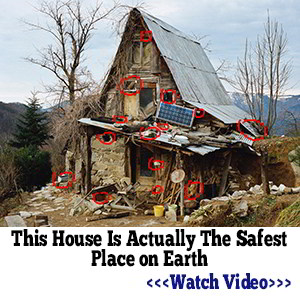 Food-Stretching Tips From The Great Depression
Food-Stretching Tips From The Great Depression
10 Medical Supplies You Need To Stockpile In Your Panic Room (Video)
DIY Home Remedy For Bronchitis
25 Things We Did as Kids That Would Get Someone Arrested Today

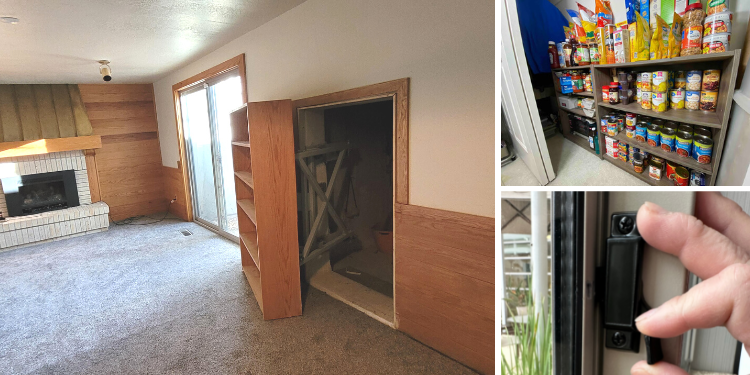




















no mention of rioting – always plenty of talk about retreating to the panic room and sitting out the riot ….
<<>>> always smacks of cowardness without even considering the intelligence behind it ….
unlike a home invasion or burglary – nobody is coming to your rescue in a riot – and you need to worry about the usual Zippo arsonists that proliferate a riot ….
and if the rioters find you hiding in your penetration-proof bunker – won’t be much of an effort to get you out – blocking the door and seeing you burn will do the job nicely for them ….
At least though provoking. I’ve recently relocated. Having to replan everything will keep this mind going for a while.
Clergylady, glad to see your comment. I hope you are well and that your new location is a blessing for you.
Where I am, a natural disaster would likely point to a subterranean safe room as the best place. Yet, my mind keeps thinking about the secret room in Corrie Ten Boom’s house where the Jews they were keeping in their house hid when the Nazis stormed the house. Hiding in plain sight.
I guessing one needs to think this through for their own needs and situation.
Most don’t have the luxury to have a single place to build a ” bunker/pantry/armory/F5-stormproof / and bank vault” room. So identifying the end use is needed, and what can or can’t be compromised ….
I’m in the process of making a “Doom Room”. The Doom Room is also currently my Home Office and Food Storage Room. It will have everything I need. The door is a steel door with an extra sheet of steel attached to the back of the door. The walls are poured cement.
Panic room, panic room, he’ll I can panic in any room in the house.?
Rimshot!
Really strange! Not a single troll all week?? I sure hope that
nothing bad like lock jaw happened to them.
It’s more likely that the site mucky mucks grew a pair and started to moderate comment.
Whatever the reason we are all better off.
Right Michael?
Right up chuck
This is a interesting article but the 100k price tag is beyond most people’s ability to afford it.
No mention of sanitation needs during that three days
Shitty
Most houses don’t have any rooms that don’t have an outside wall. Mine doesn’t and I can’t think of any home I’ve lived in that was totally inside with no windows. I’m not even sure it’s legal for safety’s sake.
Here, we have no basements… high water table…so that is also out.
I have both front and back doors out of metal…but I stupidly have the half window in them…I will be adding a sheet of plexiglass to both of them as well as to the bottom of all of my windows for extra protection. The house is 3 feet off the ground, so the upper part of the windows would be pretty difficult to try to enter…
I also need to put the longer screws in the door frames…
These aren’t about a panic room….I’m still trying to figure that one out!
About my only solution is to add the length on the back of the house and add on there…I can eliminate one set of windows as the room has both west and south facing windows…It would connect with the added on laundry room that was built before I bought it.
This is on my to do list. I just need to decide which events to plan for and provide the right protection. Home invasion is high on the list and that includes my preps being hidden from the likes of FEMA. Then I guess high wind/ tornado shelter. I would like to include some air exchange and filtration but going all the way to NBC levels seem like too much for me. I am leaning toward one end of the basement having a reinforced wall with a hidden door. It would be a little difficult to determine how long the main room should be at first glance. Each person has to decide on their own priorities and concerns.
The article is a good read and does a good job with the what is and why you need one. For the nuts and bolts of how to build one, a good reference is FEMA P-320 SAFE ROOM DESIGN PLANS. Along about page 75 they are getting to the blue prints and specifications. I am not sure I will build exactly to their specs , (our storms have been in the cat one range) but it does paint a realistic picture of what you need if you are in tornado alley.
in regard to FEMA >>> I’d be more worried your local GOV – you think your mayor & company have a stockpile? – think the local GOV can’t pass an emergency confiscation law in 2 seconds – think Johnny Law can’t put together a confiscation posse >>> you have any breach of OPSEC – including some nosey neighbor to an azzhole brother-in-law – it’ll be useless trying to hide anything when the door knock followed by a kick comes your way ….
Illini, your comments are appropriate but its not like I was going to pull a building permit and invite the inspector over to document the location and extent of my stockpile. Don’t have an asshole brother in law, and the daughter and step daughter that have toured my supplies both live out of state and do some prepping themselves. The room is more of an oversized furnace room than anything, no windows. I have only met one outsider that was aware of the room and that was because her grandmother lived here over 40 years ago. Any way thanks for your concern but I think I’ve got it covered.